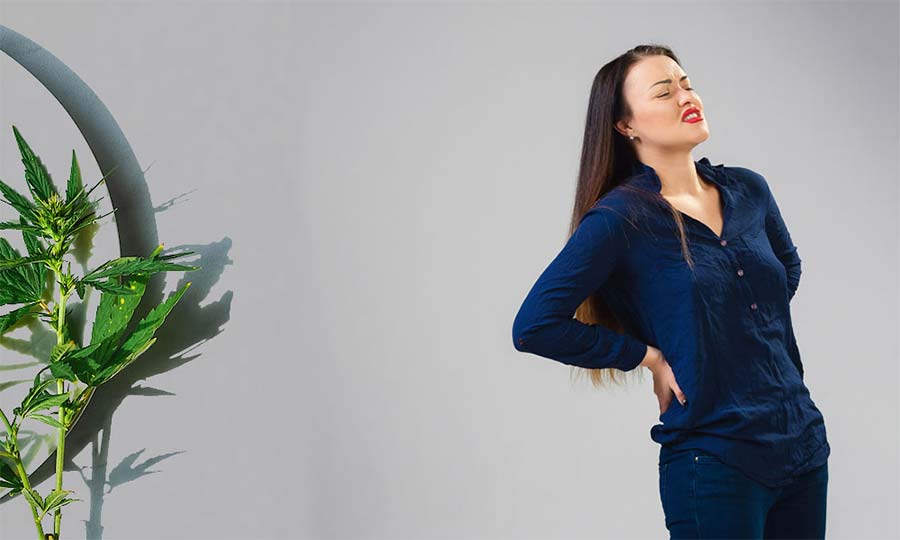Many people seek CBD to help relieve symptoms of many ailments such as chronic pain, inflammation, arthritis and many more. Over the years, CBD has soared in popularity, thanks to its flaunted health benefits. If you have arthritis, you may wonder: does CBD help for arthritis pain? As with other wellness trends, so much information is circulating on the internet. So, it can be hard to know what works and what doesn’t.
People use CBD to relieve pain from chronic conditions like arthritis. Here, we will be discussing whether CBD is an effective treatment option for arthritis. Also, we will look at the types of CBD products, how much CBD you need, and possible risks.
What is CBD?
CBD is a cannabis plant derivative. One of the cannabinoids in this plant is CBD, often known as cannabidiol. Unlike tetrahydrocannabinol (THC), it does not produce a high.
CBD is available in different forms, with each product containing varying amounts of CBD. Some of these are CBD oils, sprays, gummies, creams, among many others. Since these products do not have more than 0.3% THC, people can legally get them in many states of the USA.
Hemp is a type of cannabis plant, depending on the level of THC present. Under the 2018 Farm Bill, hemp products containing less than 0.3% THC are federally legal. Therefore, CBD oil products from hemp plants are legal.
So, Does CBD Really Help with Arthritis Pain?
The Centers for Disease Control and Prevention collected data from 2013-2015. According to this data, an estimated 58.5 million US adults annually have some form of arthritis.
Arthritis is a leading cause of work disability. The common types of arthritis are osteoarthritis, fibromyalgia, and rheumatoid arthritis.
Anecdotal evidence shows that people who use CBD for arthritis notice reduced anxiety, pain relief, and improved sleep. With that said, no extensive clinical trials confirm these. However, multiple animal studies show CBD could help relieve arthritis and inflammation.
In this 2017 study, CBD helped prevent pain and nerve damage in osteoarthritis joints. Also, a 2016 study examined the efficacy of transdermal CBD in rat models with osteoarthritis. The results showed that topical CBD application relieves arthritis pain and inflammation.
Current findings on the use of CBD for arthritis look encouraging. But there is a need for more research. A cannabis-based mouth spray called Sativex helps reduce pain and inflammation for people with multiple sclerosis. In 2006, a study assessed the efficacy of Sativex in treating rheumatoid arthritis. The study found there was a significant improvement in pain. Note that Sativex contains both CBD and THC.
How Does CBD Work for Pain?
The mechanism of how CBD works is complex and still unclear. However, researchers believe cannabinoids, like CBD, act on the endocannabinoid system (ECS). This system is responsible for balance in many bodily processes, including immune response, metabolism, mood, and appetite.
The ECS has endogenous cannabinoids. They bind to receptors in the central and peripheral nervous systems.
Exogenous cannabinoids like CBD and THC also interact with these same receptors in the body. This interaction, in turn, can produce effects such as reduced pain and inflammation. Among the most health beneficial products is Delta 8 oil. It is highly recommended to treat Arthritis Pain.
Taking CBD Products for Arthritis Pain
CBD products are available in many forms. You can take them orally, inhale, or apply them directly to the skin.
By Mouth: You can take CBD products by mouth. Some of the CBD products you can consume this way include capsules, gummies, cookies, and other edibles. Also, people add CBD to food and beverages. When you swallow CBD, it gets absorbed through the digestive tract. The effects take approximately an hour or two to appear.
Another way to take CBD is by using CBD oil tinctures and sprays. Here, the CBD goes directly into the bloodstream when you drop under the tongue. This method is known as sublingual. You feel the effects within 15 to 45 minutes.
On the Skin: Some topicals are CBD lotions, balms, and creams. You can apply them to the skin over an inflamed and painful joint. Some CBD creams and topicals contain additional ingredients like menthol and camphor. These added ingredients have their own healing properties. Many famous brands are already producing effective CBD creams for pain for people to help relieve arthritis.
Inhaled: You can inhale CBD via a vape pen. Inhalation exposes you to risks from vapor oil and by-products. This is particularly true when you use low-quality products. However, inhaling CBD provides a faster way to feel its effects than other forms.
How Much CBD Should You Use?
While there is no established dosage when using CBD for arthritis, there are general guidelines. First, when taking CBD, keep in mind that each product has a particular amount of CBD measured in milligrams (mg).
Start low and go low is the basic guideline. So, start with a few mg of CBD twice a day. If you don’t get the desired effect after a week, make small increments over several weeks. Do it until you find the ideal dose that provides the needed relief. Then, you can continue with that dose to maintain a stable level of CBD.
Also, experiment with different forms of CBD. In that manner, you’ll be able to pick the one that’s most effective for your requirements. For instance, some persons may get the needed relief from arthritis when using topical products. Others, on the other hand, may require CBD oil administration. But make sure you get top-quality CBD Oil from reputable brands, and still, if you can’t decide how much to take, then you should visit your doctor for proper guidance.
Risks and Considerations
Side effects when using CBD may be dose-dependent. They can also depend on other ingredients in the product. Some reported side effects are drowsiness, dry mouth, nausea, and vomiting.
Also, you should beware of drug interactions. Scientists found that CBD interacts with some meds a person might be taking. This interaction can impact a drug’s efficacy or lead to unwanted side effects.
If you are taking drugs for arthritis, interaction may occur with the following:
- Corticosteroids
- Tramadol
- Naproxen
- Tofacitinib
- Celecoxib
Some antidepressants and fibromyalgia drugs can also cause interactions. Because of that, consult your doctor before adding CBD to your regimen.
Furthermore, CBD products are available in almost all kinds of stores. These products are highly unregulated. Therefore, for safety purposes, you must shop carefully. Patronize brands that care about quality and follow good manufacturing processes. Besides, ensure the company tests each batch of CBD it produces. There should be reports from independent labs available on the website.
Final Thoughts
Many persons report relief from arthritis pain and inflammation after taking CBD. However, there is no strong scientific evidence to back up these claims. Most of the studies that support the usage of CBD for arthritis were on animal models.
CBD is well-tolerated and has mild side effects. However, conduct your research on the brand and its product offerings. You want to make sure they are safe for use. Like many supplements, you may need to take CBD for some weeks for beneficial outcomes. Remember to consult your doctor if you’re considering using CBD as a treatment plan.















